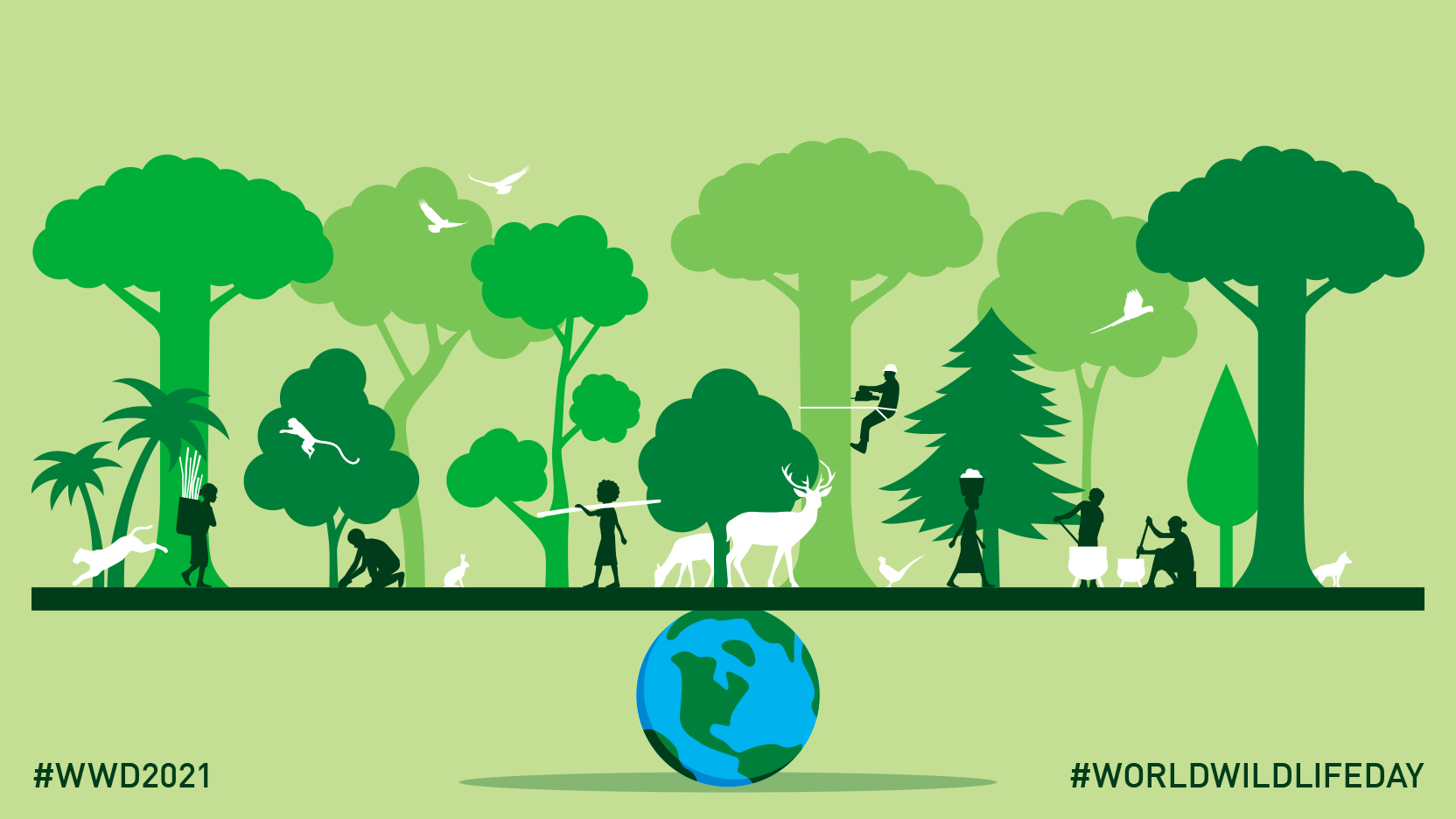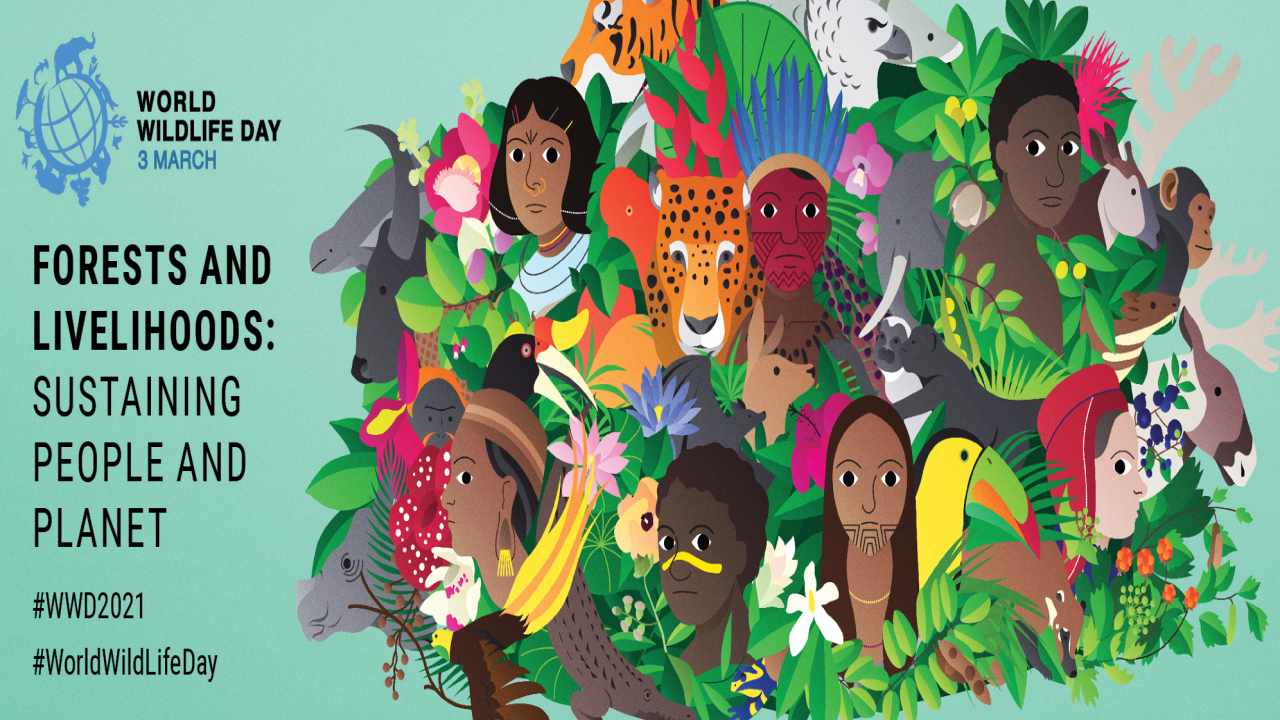World Wildlife Day is celebrated on 3rd March every year since 2014. This will be the 8th World Wildlife day which is being celebrated this year. World Wildlife Day has now become the most important global annual event dedicated to wildlife.
World Wildlife Day: History and Significance
December 2013, at its 68th session, the United Nations General Assembly (UNGA) proclaimed 3 March – the day of signature of the Convention on International Trade in Endangered Species of Wild Fauna and Flora (CITES) in 1973 – as UN World Wildlife Day to celebrate and raise awareness of the world’s wild animals and plants.
The UNGA resolution also designated the CITES Secretariat as the facilitator for the global observance of this special day for wildlife on the UN calendar.
The theme of this year and Importance: World Wildlife Day 2021

World Wildlife Day will be celebrated in 2021 under the theme “Forests and Livelihoods: Sustaining People and Planet“, as a way to highlight the central role of forests, forest species, and ecosystems services in sustaining the livelihoods of hundreds of millions of people globally, and particularly of Indigenous and local communities with historic ties to forested and forest-adjacent areas.
This aligns with UN Sustainable Development Goals 1, 12, 13, and 15, and their wide-ranging commitments to alleviating poverty, ensuring sustainable use of resources, and conserving life land.
Indigenous peoples and local communities are at the forefront of the symbiotic relationship between humans and forests, forest-dwelling wildlife species, and the ecosystem services they provide.
Roughly 28% of the world’s land surface is currently managed by indigenous peoples, including some of the most ecologically intact forests on the planet. These spaces are not only central to their economic and personal well-being, but also to their cultural identities.
The theme of the previous years has been:
2020: The 2020 theme is “Sustaining all life on earth”
2019: The 2019 theme is “Life below water: for people and planet”
2018: The 2018 theme is “Big cats – predators under threat”
2017: The 2017 theme is “Listen to the young voices”


















